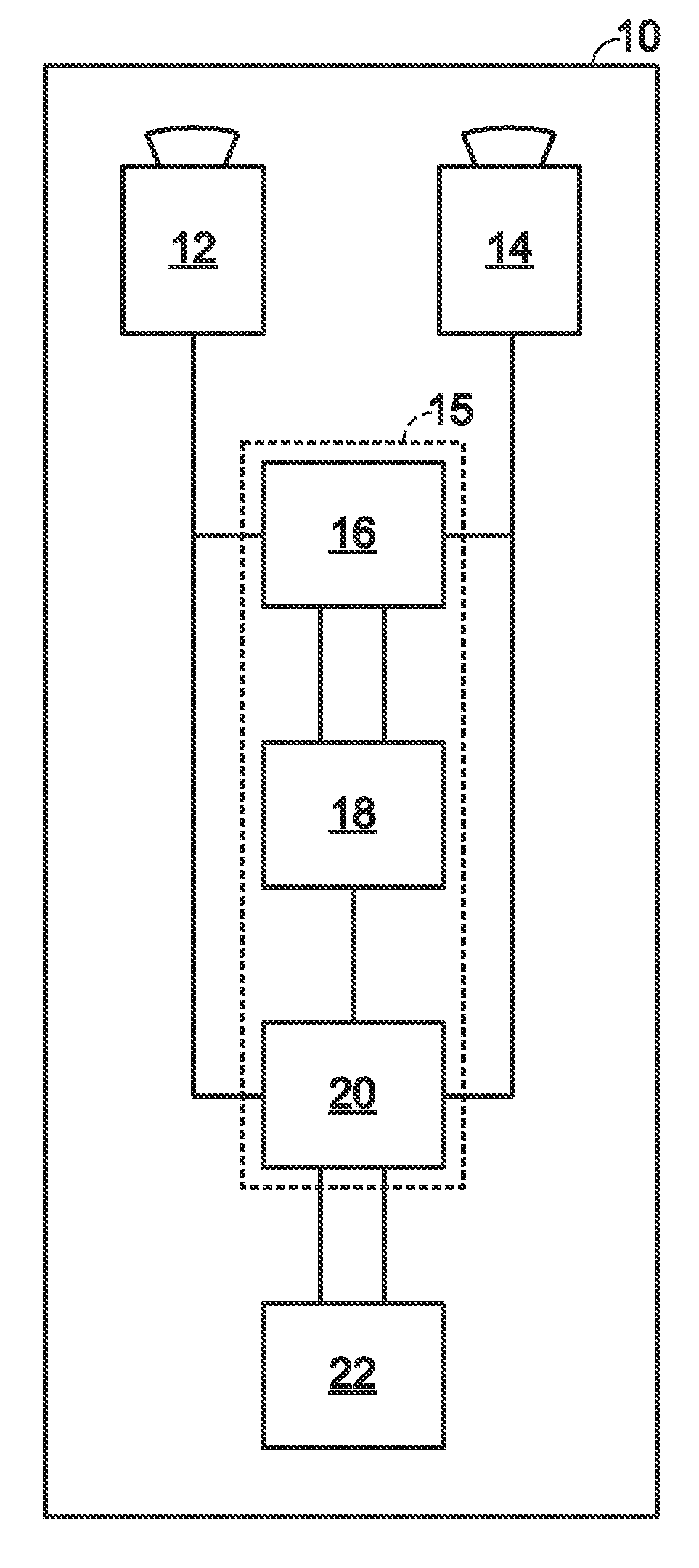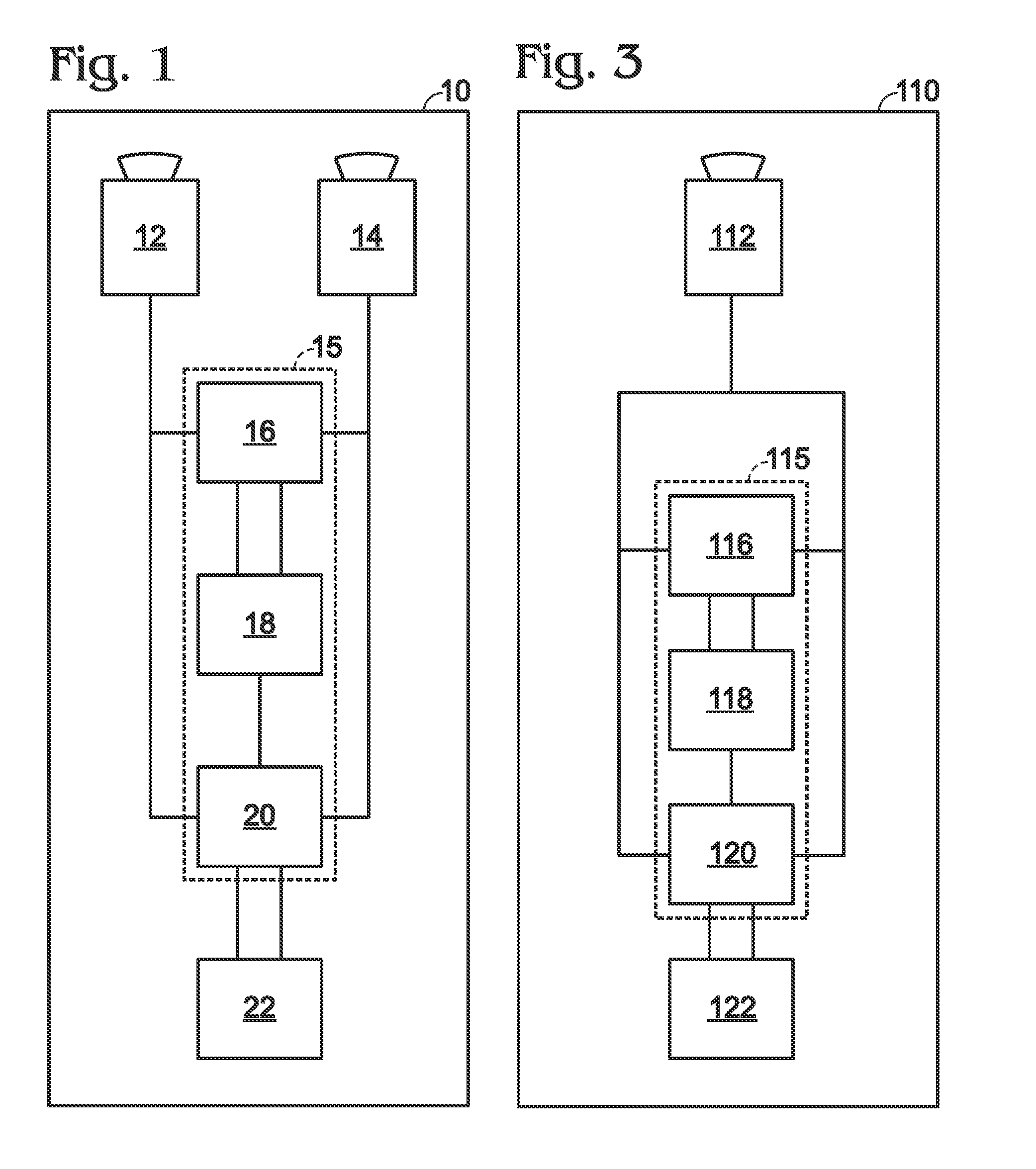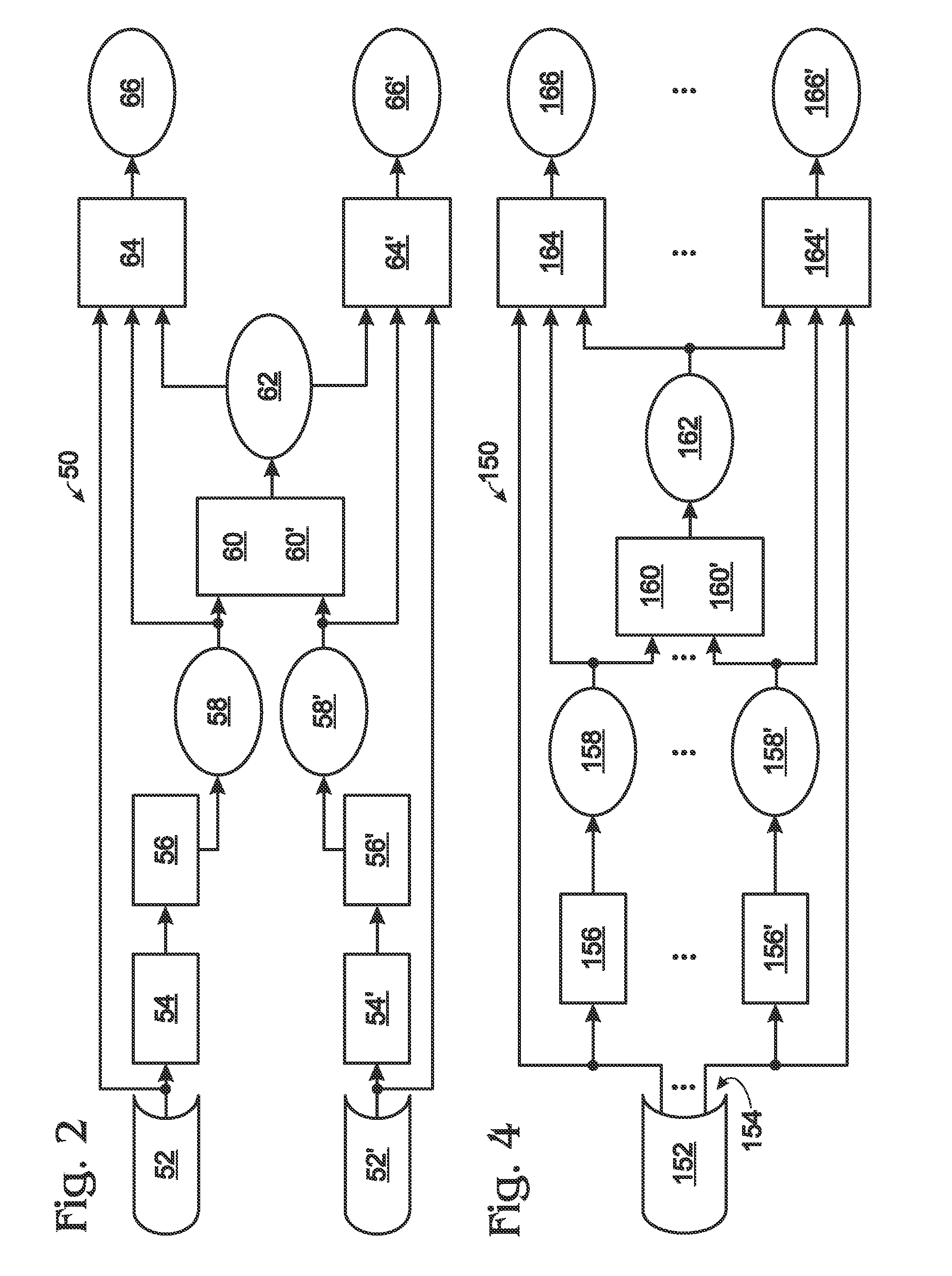Wavelength diverse scintillation reduction
a scintillation reduction and wavelength technology, applied in the field of wavelength diverse scintillation reduction, can solve the problems of system distortion, image distorted generalization, and medium distortion, and achieve the effect of reducing the optical limitations of instruments and reducing the size of the optical field
- Summary
- Abstract
- Description
- Claims
- Application Information
AI Technical Summary
Benefits of technology
Problems solved by technology
Method used
Image
Examples
example 1
Determination of Distortion Using Multiple Sensors
[0036]This example describes exemplary systems and methods for the direct determination of motion with multiple sensors; see FIGS. 1 and 2.
[0037]FIG. 1 depicts a first exemplary embodiment of an image correction system, generally indicated at 10, according to aspects of the present teachings. System 10 includes two sensors 12, 14, which are collectively capable of sensing image data in two separate wavelength regimes or wavebands. System 10 also includes a processor 15 that receives image data collected by sensors 12, 14 and performs an image correction function according to the present teachings. The process may include or employ first, second, and third processor functionalities 16, 18, 20, among other suitable configurations, for performing the image correction function. System 10 further may include a display and / or other output device 22 configured to display and / or otherwise make use of a corrected image, sequence of images, an...
example 2
Determination of Distortion Using a Single Sensor
[0060]This example describes exemplary systems and methods for the direct determination of motion with a single sensor; see FIGS. 3 and 4.
[0061]FIG. 3 depicts a second exemplary embodiment of an image correction system, generally indicated at 110, according to aspects of the present teachings. System 110 includes a single sensor 112, which is capable of sensing image data in a sufficient range of wavelengths so that the wavelength dependence of distortion-induced apparent motions may be observed and analyzed to a desired extent. System 110 further includes a processor 115, including a first processor functionality 116, a second processor functionality 118, and a third processor functionality 120. System 110 also may include a display and / or other output device 122 configured to display and / or otherwise make use of processed image data.
[0062]Sensor 112 may, for example, be a multispectral camera, such as a dual-band MWIR / LWIR camera wh...
example 3
Moving Support Platform
[0071]This example describes exemplary support platforms; see FIG. 5.
[0072]FIG. 5 depicts a helicopter 200 as an exemplary embodiment of a moving platform that might be used to support imaging systems according to the present teachings, and / or to practice methods of image correction according to the present teachings. Specifically, helicopter 200 includes a rotatable gimbal 202, within which may be disposed one or more sensors such as those described previously, including visible light and / or infrared sensors configured to collect light within various desired wavelength regimes. Also within gimbal 202, or otherwise mounted to helicopter 200, suitable processors may be disposed and configured to carry out the various image processing steps described above. Alternatively, one or more processors may be disposed at a remote location and configured to carry out some or all of the image processing steps contemplated by the present teachings. A display device such as...
PUM
 Login to View More
Login to View More Abstract
Description
Claims
Application Information
 Login to View More
Login to View More - R&D
- Intellectual Property
- Life Sciences
- Materials
- Tech Scout
- Unparalleled Data Quality
- Higher Quality Content
- 60% Fewer Hallucinations
Browse by: Latest US Patents, China's latest patents, Technical Efficacy Thesaurus, Application Domain, Technology Topic, Popular Technical Reports.
© 2025 PatSnap. All rights reserved.Legal|Privacy policy|Modern Slavery Act Transparency Statement|Sitemap|About US| Contact US: help@patsnap.com



